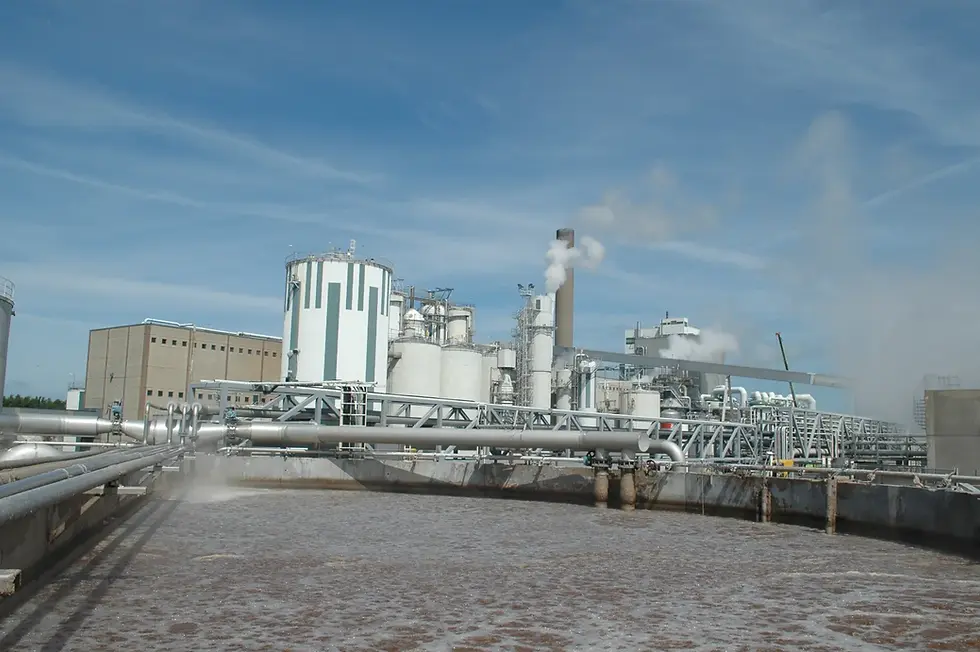Reactive Distillation vs Traditional Batch Reactors: Which is Better?
- cemnar0
- Jul 18
- 3 min read

Introduction: The Chemical Industry’s Shift to Continuous Processes
For decades, many chemical reactions—including esterification, hydrolysis, and acetalization were predominantly performed in batch reactors. This approach, while flexible, limits productivity, impacts product quality, and often incurs high energy and maintenance costs.
Today, reactive distillation (RD) emerges as a superior alternative by combining reaction and separation in one integrated continuous process. Sulzer, a pioneer in this technology, has developed solutions, including the proprietary Katapak™ catalytic packing and reactive distillation columns, that dramatically improve process efficiency and sustainability.
Batch Reactors: Strengths and Limitations
Strengths
Flexibility for small volumes and varied chemistries
Established technology with wide familiarity and turnkey equipment
Suitable for specialty or multi-product plants with batch-specific needs
Limitations
Long cycle times: Typical batch esterifications can take 24–48 hours or more, slowing throughput
Higher energy consumption: Repeated heating, cooling, and cleaning cycles increase utility costs
Quality variation: Batch-to-batch inconsistencies affect purity, color, and odor levels
Labor-intensive: Frequent cleaning and maintenance introduce downtime and operational complexity
Waste generation: Side reactions and incomplete reaction conversion create more process waste
Reactive Distillation: Integrating Reaction and Separation for Superior Performance
What Is Reactive Distillation?
Reactive distillation merges the chemical reaction with simultaneous separation of reactants and products inside a single column. This continuous approach enhances equilibrium-limited reactions by removing products instantly, shifting the reaction forward for increased conversion.
Sulzer’s Technology Edge
Katapak™ catalytic packing: Structured packing that optimizes catalyst access, mass transfer, and hydraulic performance in one module
Column sizes: Scalable columns up to 2.2 m diameter, tailored for capacities from 4,000 to 50,000 tons per annum
Applications: Fatty acid esters, methyl/ethyl acetates, acetals, and more
Advantages of Reactive Distillation over Batch Reactors
Parameter | Batch Reactor | Sulzer Reactive Distillation |
Reaction Time | 24–48+ hours | < 2 hours (20x faster) |
Process Mode | Discontinuous, batch | Continuous, steady-state |
Energy Efficiency | High (multiple heat/cool cycles) | Lower (integrated heat, less waste) |
Product Purity | Variable; dependent on batch | Consistently high, less impurities |
Maintenance | Frequent shutdowns/cleaning | Minimal; robust catalyst life (>7 years) |
Waste Generation | Higher due to side reactions | Reduced by reaction control & instant separation |
Space & CAPEX | Larger footprint, more equipment | Smaller footprint, single integrated column |
Operational Complexity | Manual batch handling | Automated continuous control |
Why Reactive Distillation Excels
Equilibrium Shift and Conversion: Continuous removal of products drives reactions beyond batch equilibrium limits.
Integrated Separation: Dehydration of esters or alcohol removal happens in situ, eliminating additional unit operations.
Superior Selectivity: Sulzer’s catalytic packings ensure minimal side reactions, reducing waste and purification burden.
Rapid Start-Up and Consistency: Continuous operation means steady product quality and easy scale-up.
Cost Savings: Lower energy demands and decreased maintenance reduce total cost of ownership.
When Is Batch Still Appropriate?
Batch reactors remain relevant for:
Small scale or specialty chemicals production with frequent product changes
Highly complex chemistries not yet adapted for continuous systems
Pilot plants or very low-volume settings
For industrial-scale esterification and acetate synthesis, however, continuous reactive distillation is rapidly becoming the industry standard due to overwhelming efficiency benefits and environmental advantages.
Hybrid and Complementary Technologies
Sulzer also innovates by combining reactive distillation with:
Divided wall columns for further energy savings
Membrane units facilitating ultra-pure product recovery and catalyst protection
Advanced process control systems improving operational flexibility
Conclusion: Make the Switch to Sulzer Reactive Distillation
Batch processes served the chemical industry well but have intrinsic limitations that reactive distillation decisively overcomes. Sulzer’s world-class reactive distillation systems deliver unmatched speed, purity, efficiency, and sustainability with proven commercial success in ester and acetate production.
Transform your operations with Sulzer’s RD technology:
Achieve at least 20-fold faster reaction times
Cut energy use and waste generation dramatically
Enhance product quality with continuous, integrated separation and reaction




